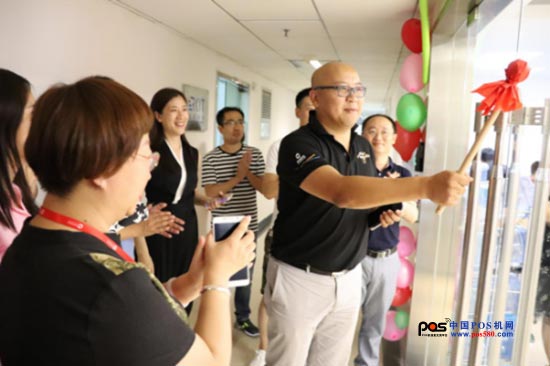In the 21st century, the Internet has developed rapidly. Cloud computing, big data, and shared economy have become hot words in the industry. They are highly respected by capital. In contrast to the rapid development of Internet technology, the traditional service industry, which is slightly sluggish, is catering. industry.
According to 2017 related data, there are more than 7 million stores in China's catering market, but in the past ten years, the catering service standard process has been solidified and complicated, the restaurant service efficiency is low, and the user experience has not changed with time. To improve and improve, Pingxin Technology has been trying to help catering owners to solve these pain points, and has been trying to use technology to promote the development of the catering industry.

Screen core technology differentiated products to meet the diverse needs of catering businesses
Before entering the catering industry, Guo Jiasu's career has always been around the communications industry. At that time, Guo Jiasu was hoping to apply his own communication and Internet technologies to specific industries. Seeing that the restaurant still relies on manual ordering and ordering, "the more chaotic the restaurant scene, the more chaotic", he came up with the idea of ​​using software to help the restaurant improve efficiency. In 2008, Guo Jiasu established “Screen Core Technologyâ€, which changed from “communicator†to “cateringâ€. In the following three or four years, the team has developed a set of "A la carte" handheld hardware devices, as well as a complete ERP system from the front desk cashier to the back kitchen management to help improve operational efficiency. After several years of development, Pingxin Technology's system has been operated by tens of thousands of catering businesses.
However, with the increase in service providers, Guo Jiasu found that the ERP system developed by the team helped the restaurant to improve operational efficiency, but each restaurant was isolated. He hopes that each business is no longer an isolated point, but is connected to face, so that there will be more information, the data will be more valuable, and it can also be extended to the upstream and downstream of the industry based on this.
Guo Jiasu believes that, on the one hand, when valuable standard catering data is continuously collected, opening a restaurant is no longer a difficult task. For example, if a person wants to open a restaurant, he can use this data to know what areas have the highest level of effectiveness, what dishes are most popular, and how big the store is most suitable. All of them are supported by data, rather than being judged by human feelings.
On the other hand, based on this information, the team can also access other eco-chain companies and services for the catering industry, such as catering manpower consulting, food supply chain and so on. At the same time, after mastering the financial data of the restaurant, the team can establish a risk control model based on this and introduce financial functions to solve the problem of restaurant funds.
However, if you want to achieve this goal, you must first standardize the food and beverage information, including food and beverage data indicators, data transmission interfaces. Change the state of the industry's 80% custom, 20% standard, and informatize and digitize the extensive and non-data business methods. This will enable effective communication between catering companies, the catering industry and other industries, and allow data to precipitate.
Around the year of 2013, the rise of SaaS further boosted Guo Jiasu's thinking. SaaS software not only allows the team to upgrade system software for all restaurants in a certain cycle, but also enables data aggregation, analysis and feedback in real time, making the standardization and informationization of the catering industry develop faster.
Landing "standardization" has been exploding growth in strategic investment SAAS system

In order to better promote the concept of “standardization of catering information†in the industry, Guo Jiasu encouraged catering owners to share data and adopted a product promotion method of “small and big, bottom-upâ€. He targeted the sales target of the product in a single store with a turnover of 1 million yuan, because they are not sensitive to the data. At the same time, Guo Jiasu also constantly communicates with the bosses of various types of restaurants, extracts their common needs, and constantly improves the standard functions of the SaaS system.
Just when the US group and the public comment for the C-end service announced the merger, Guo Jiasu saw the great value generated by the integration of the “C-side platform†and the “B-end platformâ€. After the negotiations, the two sides hit it off. In April last year, the US group public commented on the strategy of investing in Pingxin Technology.
After receiving the strategic investment of the US group's comments, Guo Jiasu led Pingxin Technology to start the development of information technology, standardization and data in the catering industry, and further promote the standardization of catering information. At present, the SaaS system developed by Pingxin Technology includes the cashier management tool “food ware housekeeperâ€, the store's key indicator reporting tool “store small calculationâ€, and the “micro-restaurant†that supports mobile online ordering and member marketing management.
New era and new ideas, Pingxin Technology Guo Jiasu finally said that the catering platform only has the idea of ​​integrating into the Internet, based on the wave of Internet development, and with the help of the big data of the SaaS system, it can gain a place in the competitive Red Sea.
Jiangsu Sleeptight Household Technology Co., Ltd. , https://www.sleeptightoem.com
